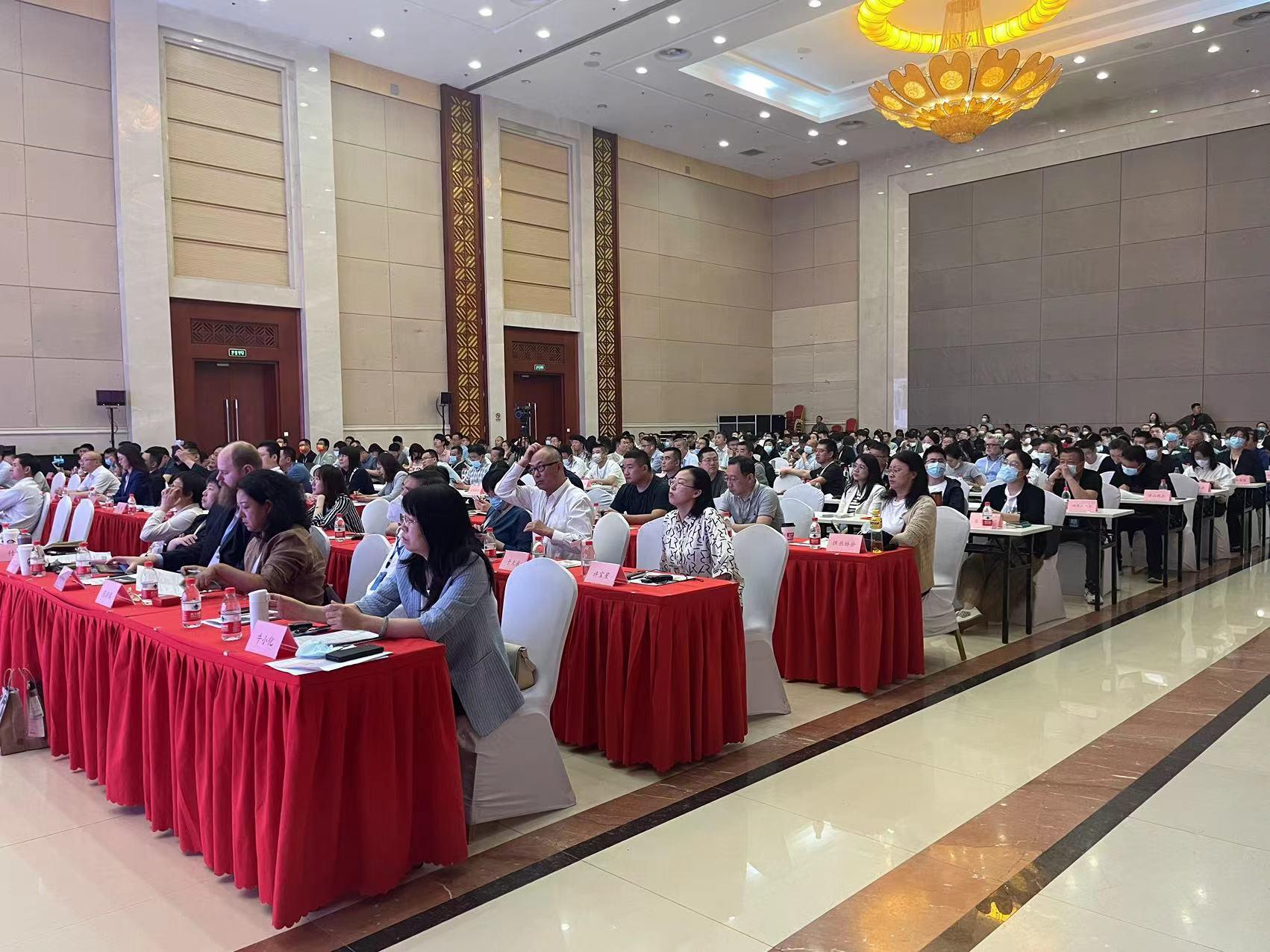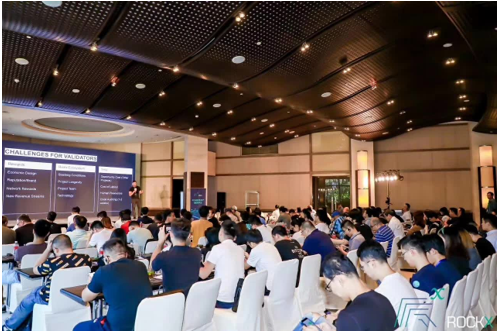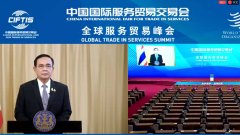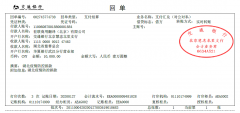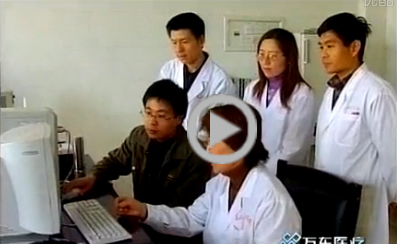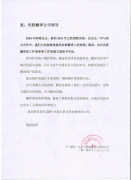上海中英同传
时间:2018-01-22 10:52 来源:未知 作者:kefu 点击:次
| 江茜 语言: 中文(母语) 英语(近母语) 教育 美国: 硕士 中英会议口译 美国加州蒙特雷翻译学院,09/2002 – 05/2004 中国: 本科 国际商务英语 证书 会计 上海对外贸易学院,09/1997 – 07/2001 资质: 美国国务院语言认证翻译 – 陪同、研讨会和大会 美国斯坦福医学院认证翻译 - 交传 &同传 出差: 中国公民、美国绿卡及港澳多次往返通行证 工作经验 2013 – 现在 思科 EBC 口译 思科EBC执行汇报中心同传及交传,包括产品技术演示及客户会议 2013 – 现在 NetApp 口译 NetApp EBC执行汇报中心同传及交传,包括技术参观及客户会议 2013 – 现在 赛门铁克口译 赛门铁克客户成功案例采访电话交传 2008 – 现在 自由职业口译 培训、座谈会、研讨会及论坛等活动交传/同传口译,客户包括:IBM、思科、SAP、博科、赛门铁克及微软等IT科技界企业,Thornburg、Orbis Global、Broad Peak Investment及里昂证券等金融企业,广州市政府、中国发改委及美国国务院等政府部门,律所及美国检察院等法律机构,英国石油、中集、中石油、中石化及俄罗斯天然气等油气企业,美联行及英国航空等航空企业,东风日产、起亚、奥迪及奔驰等汽车企业,以及其它各类企业。 2012 – 2013 ICANN口译 ICANN全球年会政府咨询委员会会议同声翻译,一年3次 2010.11 – 2010.12 广州亚运会口译 亚运会赛后发布会交传口译 2010.8 – 2010.9 北京奥运会口译 奥运会赛后发布会交传口译 2006-2007 加州Crimson Life Sciences笔译项目经理 管理并负责项目质量、按时交付及成本预算;有时编辑和审核中文项目翻译 2005-2006 佛吉尼亚 ASET International笔译项目经理 管理并负责项目质量、按时交付及成本预算;编辑和审核中文项目翻译;各语言项目QA;中文本地化项目测试。主管客户包括科勒、SBC等 2004-2005 加州TeleTech电话翻译培训经理 电话翻译技能培训;客户服务知识技能培训;电话翻译软件使用培训;行业知识培训 2003-2004 加州LanguageLine电话翻译 各类电话口译 2003夏 J.D. Edwards实习技术翻译 J.D. Edwards One-World本地化项目笔译 2002-2003 加州CNS军事翻译 2001-2002 上海安杰伦科技采购经理 负责机械及消耗类产品采购,保证价格、交付、质量及库存目标 附录 – 部分口译经验 金融 第9届中国(江苏)跨国投资峰会(同传&交传) 高盛宏观经济及信贷论坛(同传) 高盛风险溢价论坛(同传) 上海国利货币经纪有限公司2017董事会(交传) 源码码会2017年会(同传) 英国皇家特许管理会计师协会与浙江财大合作签约(交传) 北极光有限合伙人会议(同传) Eurizon Capital 母基金事宜讨论(交传) 蚂蚁金服CEO专家论坛(同传) 2016中以投资峰会(同传) 荷兰合作银行2017金融市场展望(同传) 民生银行创新训练营(同传) 2016 汇丰年会(同传) 5日硅谷互金考察(交传) 2016哈佛中国论坛(同传) 主题乐园与税务局交流(交传) 5日纽约互联网金融公司交流(交传) Robert Engle谈风险价值(同传) 高盛2015年会(同传) 互联网+时代的营销变革(同传) 同筹荟文化项目路演(同传) 5日硅谷互联网金融公司考察(交传) 2015亚太税务论坛(同传) 2015上海衍生品市场论坛(同传) 一号店及其合作伙财务合作讨论(同传) 英纳法汽车天窗系统集团第一届第十五次监事会会议(同传) 日本经济及货币政策(同传) 休斯顿大学鲍尔商学院预测分析学课程翻译(交传) 访太平洋保险、上海证交所及交通银行(交传) 中金2014下半年投资策略会(同传) 上衍原油论坛(同传) 上衍商品指数和商品期权论坛(同传) 上衍期货风险管理论坛(同传) 访标普公司(交传) 访德丰杰公司(交传) 美国纳税人协会及加州税务体制介绍(交传) 访市长办公室贸易商务办主任陈德利先生(交传) 访奥克兰财政部(交传) 访访Grosvenor公司(交传) 访芝加哥商品交易集团(交传) 访道富银行(交传) 平安保险投资人会议(交传) 泸州老窖投资人会议(交传) 2011巴西证券期货交易所以及上市公司深圳投资者交流会(同传) IBM CFO 圆桌讨论会(同传) 2009澳大利亚投资研讨会(同传) 2011深港东盟金融产业高峰论坛(同传) 里昂证券与易方达基金关于定量分析的讲座(交传) 里昂证券与大成基金关于定量分析的讲座(交传) 里昂证券与博时基金关于定量分析的讲座(交传) 里昂证券与南方基金关于定量分析的讲座(交传) 2011渣打银行尊尚人生系列论坛 – 天下(交传 &同传) 12届中国风险投资论坛(同传) 澳大利亚投资政策与研究研讨会(同传) 卡尔•萨望博士在中山大学岭南(大学)学院投资主题演讲(同传) IT & TECH 2017中芯国际技术研讨会(同传) 访上海机电及中芯国际(交传) 外来因我而不同(同传) 2017 Vector中国用户大会(同传) ABB电力与自动化世界活动(同传&交传) 2017 CES(同传) 2017 GSA大会(同传) 海航科技数字转型系列会议(同传) 阿里Big Family大会(同传) 中欧数字经济和网络安全第二次会议(同传) SUSE 企业存储培训(同传&交传) IESF 2016(同传) 微软Ignite技术大会(同传) Facebook Fbstart 项目(交传&同传) 区块链会议(同传) ABB 2016工博会发布会(交传) NetApp Insight 2016(同传) 2016 GTC大会(同传) 索尼互动娱乐Playstation开发商与发行商大会(同传) 腾讯QQ与美泰战略合作新闻发布会(同传、交传) ABB WCO 项目(同传) 2016 半导体行业论坛(同传) 2016 FD SOI 论坛(同传) 华为2016全连接大会(同传) 硅谷企业级解决方案公司拜访(交传) 硅谷、洛杉矶AR/VR 5日访问(交传) Facebook 中国合作伙伴会谈(交传) 创新圆桌 - 中印企业家对话(同传) 硅谷5日人工智能公司考察(同传&交传) IBM突破无界,云以智胜(同传) CES亚洲2016(同传) 5日硅谷儿童科技考察(交传) 访仁宝电脑(交传) 4日拉斯维加斯AR/VR考察,包括CES 2016(交传) NetApp Insight 2015(同传) 华为2015云计算大会(同传) 蔡司车身解决方案(同传) 富达投资科技及互联网公司访问(同传) 博科多客户会议(同传) 2015 亚洲消费电子展(同传) 第二届Ad Tech China(同传) 希捷“个性数据 映射精彩”产品发布会(交传) 中国省广播公司访思科(交传) 2014联想MBG核心供应商峰会(同传) 加拿大总理Stephan Harper会见阿里巴巴马云及其团队(同传) NetApp Insight 2014(同传) IESF 2014(同传) 2014华为云计算大会-业务驱动基础设施(同传) 数字营销360(同传) 思科向客户介绍思科总体情况(Consecutive) Gartner公司关于APT介绍(交传) 访Engine Yard(交传) 云战略会议(同传) Cisco EBC执行汇报中心会议 - 演示及客户会议(交传 &同传) NetApp EBC执行汇报中心会议 - N参观及客户会议(交传 &同传) NetApp Insight 2013年会(同传) ICANN 47 德班会议(同传) ICANN 46北京(同传) 甲骨文银行解决方案会议(同传) SAP核电解决方案介绍(同传) ICANN多伦多45届大会(同传) 博科2012技术分析日(同传) Flash 2012 and Beyond会议(同传) 2012中国锂电隔膜大会(同传) 华为电信软件和核心网络年度大会(同传) 2011中国移动全球开发者大会(同传) 2011中国管理全球论坛 – 转型的正道(交传&同传) 第八届中国国际半导体照明论坛 – SSL标准和检测(同传) 第八届中国国际半导体照明论坛 – 材料与装备技术(同传) 第八届中国国际半导体照明论坛 – 驱动,电源与控制技术(同传) 第八届中国国际半导体照明论坛 – 大会(同传) IBM智慧社会,社交商道(同传) 2011华为云计算大会 – 智能服务型政府与公共事业论坛(同传) 2011华为云计算大会 – 云计算技术论坛(同传) 2011华为云计算大会 – 云操作系统(同传) 2010深圳宝安高端产业招商引资推介会(同传) 第三届中国深圳国际工业设计节(同传 &交传) AVID广电行业峰会(同传) 风河软件开发商大会(同传) IBM System z上的Linux(同传) LED会议(交传) 第七届中国国际半导体照明论坛 – SSL标准和检测(同传) 第七届中国国际半导体照明论坛 – 先进封装与模组技术(同传) 第七届中国国际半导体照明论坛 – 材料与装备技术(同传) 第七届中国国际半导体照明论坛 – 芯片与器件技术(同传) 第七届中国国际半导体照明论坛 – 大会(同传) 宇龙酷派供应商大会(同传) 斑马公司亚太供应商峰会(同传) IBM 2010 智慧系统全球行(同传) IBM企业x5架构发布会(同传) 万盛2009亚洲客户大会(同传) 动漫产业论坛(同传) 华为LTC B2B里程碑会议(同传) 微软-迈瑞Win CE合作会议(同传) 微软-酷派Win CE合作会议(同传) 微软-比亚迪Win CE合作会议(同传) 微软-e人e本Win CE合作会议(同传) 第5届中国国际显示大会(同传) 华为三星CTO研讨会(同传) HDMI开发者论坛新闻发布会(交传) HDMI开发者研讨会(同传) 新机遇:光电子产业 —— 激光微型投影仪(同传) 海量内容传输与互联网数据中心讨论会(同传) 腾讯智慧,2008高效在线营销(同传) 2007赛门铁克年会(同传) 美特斯IT工作(交传) 亨斯曼高层会议(同传) 投影技术会议(同传) 雅图投影合作会议(同传) BigTide显示器合作会议(同传) 访迈瑞公司(同传) 化工&金属 17届IWCC联席会议(同传) 2016中国昆山国际创新创业大会之新材料分会(同传) IWCC 2016 工作会议(同传) 2016亚洲铜业周会议(同传) IWCC 2015工作会议(同传) 2015 CEO峰会(同传) 访CQLT、创立集团、上海电气及威孚集团(交传) 2015中国国际化纤会议(同传) 卓勒泵产品介绍(交传) 第十届铜铝峰会(同传) 应用可靠性研讨会(同传) 工业包装 - 技术创新展示(同传) 投资人访钢铁企业和交流(交传) 伟尔和Trio公司整合会(同传) 2014中国国际化纤会议(同传) 17届中国国际化纤会议(同传) 2010 IRRDB国际橡胶研讨会(同传) Hoffmann第二届涂料应用研讨会(同传) 首届中国PVD技术及应用发展趋势论坛(同传) 国际废金属峰会(同传) 地产 亚洲建筑中心第二届国际学术论坛(同传) WYDF2017春季论坛暨简一大理石瓷砖发布(同传) 访搜房地产(交传) 第四届AS建筑理论论坛暨国际研讨会(同传) 亚洲建筑中心成立暨国际研讨会(同传) 亚洲地产投资论坛(同传) 梦工厂项目谈判(交传) 访九龙仓、华润置地及恒隆广场等办公地产项目(交传) 欧尚项目及商业计划培训(同传) HIP Housing关于Edgewater Istle 的翻新计划(交传) 同济大学中法中心培训-建筑照明(同传) 中国中盟投资峰会暨万科会议 – 聚焦纽约地产房地产(同传) 2011未来城市可持续发展论坛暨第九届地产经济主流企业年会(同传) 招商地产会议(交传) 瑞吉豪华精选媒体发布会(同传) 油气能源 BP PTAir 中国上市活动(同传&交传) 中国(南京)跨国公司高层石化发展交流会(Simultaneous) 油运安全论坛(同传) 中国(国际)核电仪控技术大会(同传) 宝利-比图米亚与俄罗斯战略会议(同传) 第四届中国液化天然气论坛(同传) 访问加州公共事业委员会讨论加州天然气管理和基础设施(交传) 阿拉巴马大学Philip Johnson教授关于乏风瓦斯催化氧技术讲座(交传) BP技术大会(同传) 能源行业项目管理(交传、同传) 美国休斯顿大学鲍尔商学院信息管理课程(交传、同传) 美国休斯顿大学鲍尔商学院国际石油项目管理课程(交传、同传) 美国休斯顿大学鲍尔商学院策略领导课程(交传、同传) 美国休斯顿大学鲍尔商学院领导力课程(交传、同传) 中集安瑞科TGE半年工作会议(同传) Holvrieka 2010 年中运营情况会议(同传) 美国休斯顿大学鲍尔商学院油气资源价值创造课程(交传、同传) 中国-俄罗斯2010中亚石油天然气论坛(同传) 第15 届TGE 研讨会(同传) 炼油及成品油品质检测(同传) 中国-俄罗斯2009中亚石油天然气论坛(同传) 2008欧亚能源论坛深圳站(同传) 俄罗斯天然气工业公司商务谈判(交传) 城市管理 中美交通论坛第7次会议暨第8轮中美海运磋商(同传) 访San Mateo警察局(交传) 访旧金山警察学院(交传) 访奥克兰市政讨论流动摊贩管理(交传) 中国农村养老保险制度改革与发展研究项目总结会(同传) 访旧金山警务机构(交传) 访旧金山湾区模型中心(交传) 访马琳郡规划委员会(交传) KDI土地使用规划会议(同传) 联合国教科文组织创意城市网络深圳会议 – 新媒体、新科技和电影发展工作坊(同传) 中国交通建设股份有限公司访谈(交传) 城市基础设施建设部长级会议(同传) 广州后亚运交通治理(同传) 大城市中心区交通拥堵问题分析与对策国际研讨会会议议程(同传) 在中国城市推广以行人和公共交通为导向的发展模式(同传) 构建世界级的城市研讨会(同传) 法律 上合组织丝绸之路成员国法律服务国际论坛(同传) 第五届大陆架和海底区域制度科学与法律问题国际研讨会(同传) 拉美投资和争议解决研讨会(同传) Taxland:诉讼及国际合作(同传) 访美富律师事务所讨论商标保护(交传) 访旧金山市检察院及 Katsuranis& Rodriguez 律所会议 (交传) 访旧金山高等法院及Santa Clara检察院(交传) 交通事故案件口供取证(同传&交传) 中国知识产权法最新发展:著作权法修订及执法挑战(同传) CCH会议 欧洲市场的机遇与风险: 最新专利与商标诉讼实例解析(同传) 2011全国外商机构保护知识产权座谈会(同传) 微软与广州文化 广电新闻出版局和广州市版权局关于知识产权的讨论(交传 &同传) 美国司法部汽车车灯反托拉斯案(交传) 美国联邦地区检察院武器出口听证会(交传) 美国联邦地区检察院调解听证会 – 无证出口军用装备(交传) 中国-欧盟节约能源法国际研讨会(同传) Aquatech法律会议(交传) 中法庄园审慎调查(交传、同传) 环境&安全 午宴:上海发改委&GIZ, 碳交易(交传) C TEAM成立仪式(同传) COP21: 气候政策讨论(同传) JAC 企业社会责任论坛(同传) 2014年土壤环境评价与修复技术国际研讨会(同传) 2014 中国上海绿色建筑和建筑节能科技周(同传) 访上海发改委、环境交易所及上海立法院,及相关工作会议(同传) 2009绿色信贷国际研讨会(同传) 中欧对话工作坊:环境与健康(同传) CCS技术研究与开发(同传) 中欧能源环境项目(交传) 气候变化及其它国际挑战相关的报告实践研讨会(同传) 哥本哈根气候理事会拜见国家发改委副主任谢振华(交传) 英国大使馆文化教育处关于全球变暖问题的调研(交传) 低碳生态人居和生态健康产业国际论坛(同传) 低碳城市建设规划培训(同传) 广东碳捕集与封存预留2011专题研讨会(同传) 纽威公司SEAL安全培训(交传) 航空与港口 “英才思” - 2017达美航空行业论坛(同传) 随美国移动总司司长哈雷罗先生参加中欧民用航空安全相关活动(交传) 2017亚洲公务机航空展(同传) 英国海事介绍(同传) 访春秋航空(交传) 安特卫普港务局新闻发布会(交传) 绿色港口和船只计划工作讨论(交传) 跨河如海 - 第2届世界水源地峰会专业讨论(同传) 访商飞公司(交传) 2015 亚洲商务航空展(同传) 第5届中国年度机场值机系统高峰会议(同传) 美联航2012国际媒体日(同传) 2011深圳(国际)航空运输论坛(同传) 2009深圳(国际)航空运输论坛(同传) 英航新增上海航班媒体发布会(交传) ACAA培训(同传) 家具及设计 面向未来的创新设计与智能科技(同传) 2016 AWE(交传) 《室内设计》杂志2014论坛(同传) 丽敦豪邸新闻发布会(同传) 16届中国国际名家具展专家论坛(同传) 交汇 – 重塑国际家具格局(同传) 罗浮宫家居国际创意联盟成立暨罗浮宫家居总部大厦全球招商新闻发布会(同传) 2011第二届中美欧设计师高峰论坛(同传) 世界博览会展馆展示设计国际论坛(同传) 物流 GSCM 2015(同传) 中国国家供应链与物流大会暨中国制造业峰会(同传) 中国国际物流与交流运输博览会德国物流联盟国际会议(同传) 2011年第五届物博会-物流与供应链管理高峰论坛(同传) 体育 2017 FIBO 中国健身产业未来发展高峰论坛(同传) 耐克Breaking2直播(同传) 耐克全员大会(同传) 南京青年文化周(同传) 新百伦足球产品活动(交传) 优赋思体育营销(同传) 2011深圳大运中欧青年论坛(同传) 塞巴斯特.科勋爵2012伦敦奥运会新闻发布会(交传) 伦敦奥运会主席塞巴斯特.科勋爵专访(交传) 伦敦奥组委奥运8分钟新闻发布会(交传) 北京奥运会(交传) 广州亚运会(交传) 亚奥理事会协调会第8次会议(同传) 旅游 Nomura公司组织的旅游行业市调(同传) 2010博鳌旅游论坛(同传) 2010广州国际旅游论坛(同传) 南非旅游与贸易研讨会(同传) 酒 嘉露全球分销商大会(同传) 中国第一届酒文化节新闻发布会(同传) 医学&生物 2017中美医院合作峰会(同传) 新科技在种植中的应用(同传) 2017中美卫生合作峰会(同传) 访恒瑞医药(交传) 泛美健康组织早餐会(同传) 第一届中以医院院长会议(同传) 2016 THNIC专家论坛(同传) 狼牌公司2016中国区培训(同传) 优时比制药患者价值战略培训(同传) 2016南京生物医药发展论坛暨诊断技术与移动医疗国际交流峰会(同传) 第六届创新给药技术学术研讨会 2016复星健康控股年度工作会议:整合、创新、闭环和互联网(同传) 访恒瑞集团(交传) 5日硅谷生物制药公司拜访(交传) 平安-梅奥合作讨论(交传) 上海—丹麦中部大区卫生保健领导力研讨会 妇产科访问(交传) 硅谷数字医疗公司5日访问(交传) 灵北有关抑郁症及其药物的介绍会(同传) 硅谷医疗科技公司5日访问(交传) TAK 438-303 & 305 调查员会议(同传) 医院管理国际论坛(同传) 唯安中国揭幕及造血干细胞科学讨论(同传) 国药控股医药分销高级论坛(同传) Vendolizumab临床(同传) 2015 健康产业领袖峰会启动仪式暨新闻发布会(同传) 访绿叶集团(交传) 中国制药企业国际化战略高峰论坛(同传) 牙齿治疗(陪同) 访劳伦斯伯克利国家实验室(交传) 访斯坦福Ginzton、Geballe和SIMES实验室(交传) 访美国国家能源部联合生物研究所(交传) ICH 合规体系下的QBD/PAT应用指南(交传) 斯坦福医学院肾脏移植翻译(同传&交传) 中国天津医疗卫生官员代表团访凯撒医院(交传) GSK HZC113684 研究启动会议(同传) TRK-100STP 研究院会议(同传) 中国氨基酸及保健茶发展趋势会议(交传) 21世纪制药生产的国际趋势(同传) 健康与生产力管理研讨会(同传) 拜尔材料科学2011年会(交传) 中国发改委与英国的艾滋病合作项目(同传) 汽车 2017 CES奔驰媒体科技日(同传&交传) 2017 比亚迪海外合作伙伴Dreamcast大会(同传) 宾利17幕尚培训(交传&同传) 腾势技术公开课(交传) 奔驰Car2X介绍(交传) 2016第二届汽车先进制造技术峰会(同传) 2016智能汽车技术论坛(同传) 2015奔驰华东售后经销商大会(同传) 访豪华SUV品牌(同传、交传) 先进汽车制造(同传) 新车型出口商培训(同传) 东风日产2011广州车展(同传) 起亚广州车展:对话大师 – 彼得 西瑞尔(同传) 2010北京国际汽车展(同传) 2010梅塞德斯-奔驰全国售后经销商大会(同传) 奔驰安全事故管理会(同传) 奥迪Q5投放活动(同传) 宝马公司汽车导航系统焦点调查(同传) 教育 品格教育(交传&同传) 剑桥考试委员会教育联盟会议(同传) 中英国际学院欢迎会(同传) 2015 ATD 大会(同传) 2015年度教育合作论坛(同传) 激发学生潜能(同传) 2014 ASTD 大会(同传) 2013 ASTD 大会(同传) 2012 ASTD会议(同传) 道德 Sedex 10周年庆(同传) 福德道德规范培训(同传) 玛莎道德贸易大会 – 远东地区(同传) 中国人民政府与旧金山道德委员会会议(交传) 2011 IntegrityCounts会议(同传) 动物&农业 中国可持续农业发展研讨会(同传) 第九届国际树莓大会(同传) 访伯克利大学林业研究管理人员(交传) 访美国农业部林业局第五林区太平洋西南试验站访地测局(交传) 访加州戴维斯分校动物科学院讨论牛相关话题(交传) 中国媒体与加州杏仁协会关于杏仁收获的访问(交传) 地质 访美国地测局(交传) 深海热液喷口发现报告(同传) 艺术&媒体 2017文化贸易论坛(同传) “设计之都“创新趋势峰会(同传) 好莱坞创意论坛(同传) 2016 上海双展媒体发布(交传) 2016 上海双展学委会会议(交传) 访KQED(交传) 中国上海国际艺术节(交传、同传) 商务 相城投资推介会(同传) 宿迁投资推介会(交传) 艾伯特省投资峰会(同传) 丝路与丝路发展国家贸易政策介绍(同传) 麦肯锡领导力过渡转型培训(同传) 劳动关系协调员培训(同传) DBA博士论文写作(同传) 首次中印合作高峰学术论坛(同传) 美容及奢侈品 蔻驰2017全员大会(同传) 蔻驰2017春季路演(同传) 梵克雅宝销售培训 - 激发团队(同传) 蔻驰2016全员大会(同传) 蔻驰2016春季新品路演(同传) 玫琳凯记录管理培训(交传) 爱茉莉太平洋集团投资者交流(同传) 梵克雅宝销售培训(同传) Skin Food采访(交传) 德美乐嘉2011美博会产品推介(交传) 雅诗兰黛与合作伙伴营销战略会议(同传) 某知名一线服装品牌亚太年会(同传) Paul Smith 品牌发布会(同传) 广告媒体&营销 谷歌:如何做好YouTube素材(同传) 咖啡品牌市调(同传) 金星秀:访布拉德皮特(同传) 群邑公关危机预防与管理(同传) 群邑未来发展内部会议(同传) 白马广告公司LCD产品会议(同传) 鞋业及服装 耐克2015夏季新品发布(同传&交传) 耐克刘翔中心揭幕(同传) 耐克2014疾速之旅(同传&交传) 第11届中国国际鞋展(交传) 安全 访南京市公安局(交传) 2014 北太平洋沿海警卫队专家3月会议(交传 &同传) 保险 平安安泰合作讨论(同传) 友邦2014年中会议(同传) 公益 恩派社会企业论坛(同传) 游艇 摩纳哥上海文化周(同传) 审计 NIOSH质量审计(交传) 人事 2015中国人力资本论坛(同传) 供应商大会 2017 欧菲集团全球供应商大会(同传) 供应商和经销商会议 Bosch 供应商大会(同传) 豪马供应商峰会(同传) 绘儿乐供应商峰会(同传) 华润万家供应商峰会(同传) 美的日用家电国际营销部国际经销商大会(同传) 就业 中英就业与创业论坛(同传) 青年绿色就业(同传) 其它 讯达电梯开业典礼及董事会会议(同传&交传) 柯达柔印技术中心揭幕(交传) 访Contra Costa县称重计量局(交传) 中国华南国际标签印刷展览会(同传) 美赞臣POA会议(同传) 世界城市文化论坛(同传) 世联翻译-让世界自由沟通!专业的全球语言翻译供应商,上海翻译公司专业品牌。丝路沿线56种语言一站式翻译与技术解决方案,专业英语翻译、日语翻译等文档翻译、同传口译、视频翻译、出国外派服务,加速您的全球交付。 世联翻译公司在北京、上海、深圳等国际交往城市设有翻译基地,业务覆盖全国城市。每天有近百万字节的信息和贸易通过世联走向全球!积累了大量政商用户数据,翻译人才库数据,多语种语料库大数据。世联品牌和服务品质已得到政务防务和国际组织、跨国公司和大中型企业等近万用户的认可。 |





